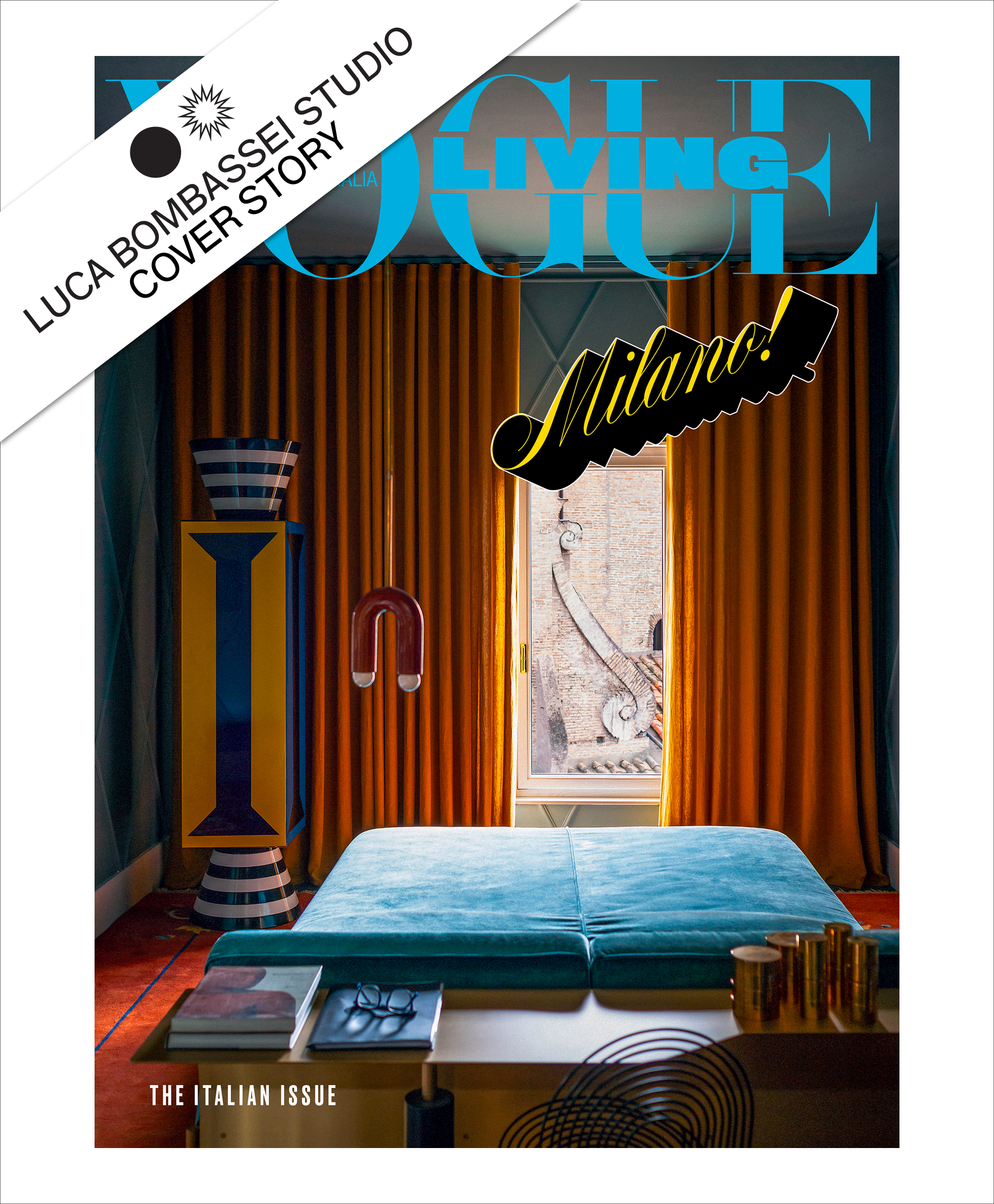




 Luca Bombassei
Luca Bombassei Vogue Living – July / August 2025

The Italian Issue
Reinvention is an unteachable talent requiring a consciousness of history and courage of vision. Creative practitioners who possess the power to make the familiar feel newly discovered are asked ‘Is it a gift earned or inherited?’, but when masterfully wielded by architect Luca Bombassei, there’s wisdom in deferring to Rilke, the poet who advised those on the threshold of creation: “You must give birth to your images. They are the future waiting to be born… The future must enter you long before it happens.”
As a student, Bombassei enrolled in economics with every intention of following in his family’s entrepreneurial footsteps. But he admits it was not his path, and looking deeper within, he can see his father’s passion for painting had “infected” him too, “and then materialised as the creativity that comes with being an architect and a collector of contemporary art”.
It was this artistic pursuit — and a willingness to open the doors to his private collection — that has helped a broader audience understand Bombassei’s approach to architecture and interior design, and connected his Milan-based studio with compatible clients. “In this case,” he says in reference to his latest residential feat, “it started with meeting collectors who needed to restore an apartment while reconciling it with their art.”
Aesthetic empathy, he says, “creates more opportunities than you can imagine.” Bombassei’s bold transformation would have dizzied the early inhabitants of this Roman home, which occupies the top of a building he estimates originated in the 17th century. “It was remodelled over the centuries and divided into apartments,” Bombassei says of the property, which braved a “drastic ’80s intervention that eliminated everything belonging to the past”.
His clients had acquired the rooftop and floor below — the architect explains Roman houses typically have a partially flat roof and arched room at the centre of a terrace, which would have been used for drying laundry and savouring Rome’s sunlight. “I did nothing but enhance the connection between the two levels and the light,” he says, downplaying the innovation required to consolidate and reinforce the terrace, which he has “totally opened up” so that the florid fullness and architectural volutes of neighbouring churches can be seen from both floors.
On the terrace, large potted plants and mirrors placed just so frame and refract the skyline from all angles. Beneath a corona of arches, a dining space is decorated with views of Rome — a city of contrasts, as Bombassei says. “To give one example, in the historic centre Baroque churches and 1930s buildings coexist, which is a great inspiration of mine. I mix them, creating a personal synthesis that can be found in my projects.” In this home, the architect’s reach toward a harmony of history and modernity results in a technical triumph as well as an emotional one — Bombassei says that when carried out respectfully, contemporary insertions can be a gesture of love for the existing building. Luminous and buoyant with colour, the apartment is divided into seasons, the summery rooftop, and a wintry lower level encompassing a living room, kitchen, and two bedroom suites with adjoining bathrooms.
The architecture of Carlo Scarpa is evident in the design of the entrance staircase, which also references materials typical of Roman basilicas, including white Carrara, black Marquinia and Verde Imperiale marble impaled on brass balustrade. Brilliantly, the green stone step doubles as a desk — functionality is made to feel precious. Off the entrance, a living room underpinned by the same Bisazza tiled marble floor features a Carrara fireplace, its opening is off-centre (the architect does not strive for symmetry). The fireplace’s upper volumes in warm Canaletto walnut were inspired by coverings used in the 1950s; it also cleverly hides a large TV screen.
Furniture anchors the architect’s approach to collecting art — “I love to mix ancient pieces with those of young emerging artists… always aiming for a balance of contrasts.” There are whispers of Roman archaeology, and early 20th-century avant-gardes, inspiration care of Carlo Scarpa and Piero Portaluppi, and references to the Memphis Group and Mendini, “all in dialogue with the contemporary art of my clients.” The archaeological finds informed how Bombassei imagined each space; beside them are “small jewels of contemporary design”. The resulting ‘age gap’ is a visual and conceptual representation of his beloved ancient Italian cities. “Colour belongs to the city of Rome,” asserts Bombassei, who channels this strength by dipping his brush into greens, blues and scarlets. In one of the bedrooms, a palette of primary colours was inspired by a Chinese Art Deco carpet on the floor. The shades “are perfect for dreaming and sleeping” he suggests, and they all appear throughout the house “in one way or another”. The heady effect is enriched with velvet curtains and bedspread, though he veers away from hyperbolic decoration.
“As a Milanese, my vision of Rome is this sort of sober opulence.” Bombassei’s work distils down to “the diversity of stimuli” that he receives simply by moving through the world. “Whether it’s a visit to the Architecture Biennale in Venice or an exhibition on Caravaggio in Rome, something will attach itself to my mind.” His vision is “nourished by tradition, the present and future”, and frequenting European cities exposes new combinations. The challenge is in finding a balance that ensures history is enhanced and not distorted by contemporary disruptions. “It’s not easy, but when successful it’s much more satisfying than a ‘classic’ restoration, precisely because it has a more incisive personality.”
By Lindyl Zanbaka – Photo by Andrea Ferrari




